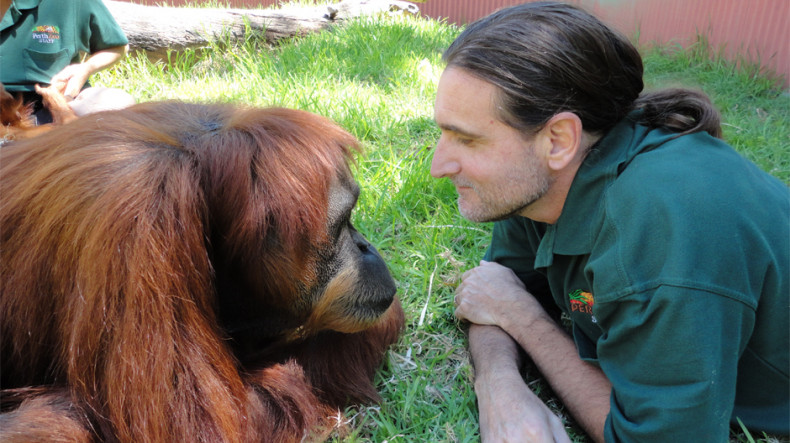
Orangutans communicate with a 'language' of 11 noises and various gestures, study finds
Orangutans have a primitive form of language which they use to communicate, a new study claims.
Various sounds — including a 'kiss squeak', 'raspberry' and a 'gorkum' — have clearly defined meanings which are understood by the apes.
Researchers from the University of Exeter found that wild Borneo orangutans can instruct another to 'climb on me', and also request to 'climb on you', Daily Mail reports.
'Resume play' was another one of the remarks made by the orangutans, the scientists said.
A 'language' of 11 vocal signals and 21 'physical gestures' was identified from video footage of 16 orangutans (seven mother-child pairs and a pair of siblings).
A grand total of 1,299 communicative signals – 858 vocal signals and 441 gestures - were seen, allowing the researchers to discern what they meant.
Gestures included beckoning, stamping, pushing out a lower lip, shaking objects and 'presenting' a body part.
Vocalisations include a sharp kissing noise created while inhaling (kiss squeak), a low drawn out sound made during inhalation (grumph) and a kiss squeak followed by multiple grumphs - a sequence dubbed the gorkum.
The apes were highly responsive to gestures and noises, reacting either before the sound had finished or less than a second afterwards in 90 per cent of instances.
'We observed orangutans using sounds and gestures to achieve eight different 'goals' – things they wanted another orangutan to do,' said University of Exeter scientist Dr Helen Morrogh-Bernard, founder and co-director of the Bornean Nature Foundation (BNF).
The eight identified 'goals' of communication were: 'acquire object' (signaller wants something), 'climb on me', 'climb on you', 'climb over', 'move away', 'play change: decrease intensity', 'resume play' and 'stop that'.
Dr Morrogh-Bernard adds: 'Orangutans are the most solitary of all the apes, which is why most studies have been done on African apes, and not much is known about wild orangutan gestures.
'We spent two years filming more than 600 hours of footage of orangutans in the Sabangau peat swamp forest in Borneo, Indonesia.
'While some of our findings support what has been discovered by zoo-based studies, other aspects are new – and these highlight the importance of studying communication in its natural context.'
Newsfeed
Videos






























